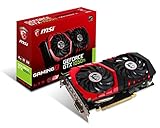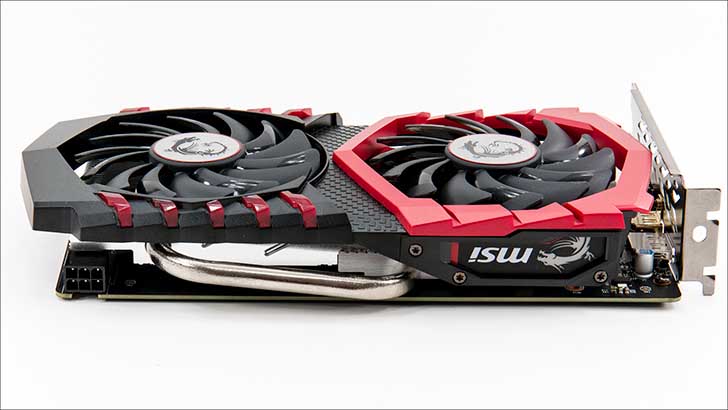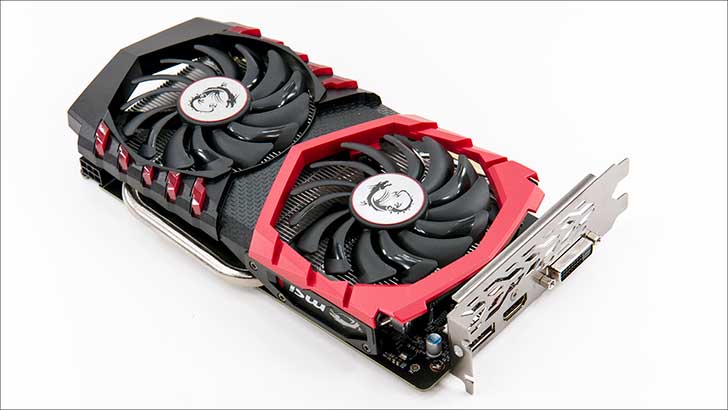As expected from a Gaming X video card the GTX 1050Ti Gaming X 4GB’s shipping container is large, filled with useful information to allow consumers to make an informed decision, and attractive. It is also very distinctive without being garish. In other words, it is classic MSI Gaming X. The only minor issue is you will have to be careful when picking up this box as it is actually fairly easy to mistake it for a different Gaming X model. So buyer beware, and read the label or you may just get a surprise at the checkout when they sell you the Gaming X GTX 1060 model!
Also like the all Gaming X models, the interior is broken up into two different sections. At the top resides a small cardboard sleeve which houses the included accessories, while the rest of the box is taken up with copious amounts of low density packing foam. Nestled in the middle of this cocoon of protection is the GTX 1050Ti Gaming X 4GB itself – which is packaged in an anti-static bag.
The only minor issue is that the accessories list is rather barren in comparison to higher Gaming X models like the x60, x70, etc. Basically, all you will find in the cardboard sleeve is a disc with outdated drivers, a small pamphlet and a sticker. This is par for the course with sub $200 models so don’t be too disappointed that MSI did not go above and beyond ‘industry standard’.

Before we go over the actual card itself a bit of background information is required on the NVIDIA GTX 1050Ti processor itself. Like any modern graphics processor NVIDIA’s latest ‘Pascal’ design is modular and consists of very large building blocks that are called a ‘Graphics Processor Cluster’ or GPC for short. This large block of processing horsepower is then further made up of – up to – five ‘Texture Processing Cluster’ which is then made up of (up to) two “Streaming Multiprocessor” (SMP) sublocks, which is further broken down into clusters, with each of these small clusters consisting of 32 CUDA Cores and other low-level odds n sods. Yes this sounds overly confusing, but makes sense from a design perspective as each of these TPC blocks are considered their own indecent processing unit. This allows each of these blocks to work on different tasks simultaneously – further improving overall Frames Per Second as well as Asynchronous Compute, physics, etc.
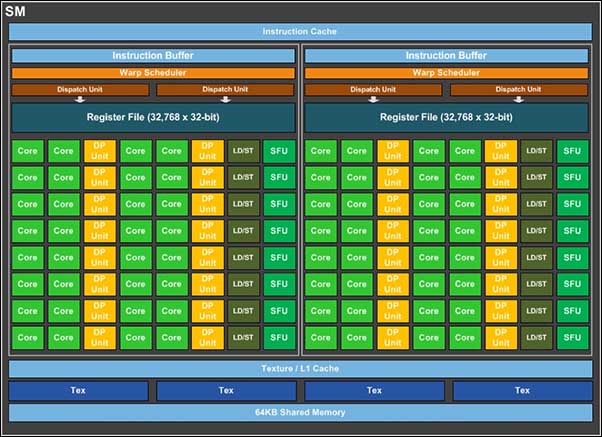
To picture this imagine AMD’s ‘ThreadRipper 1950X’ CPU and instead of seeing two Ryzen 7 1800Xs on the die… each large ‘1800x’ block is called a GPC in NVIDIA land. Drilling down into each block, instead of two CCX’s inside you have TPCs… and you can continue the image as far down the rabbit hole as you wish. Now unlike a Ryzen CPU’s CCX, NVIDIA can actually scale down the number of TPCs in each GPC without being limited to just disabling them. Instead they have actually split the Pascal design into a few subgroups for each sector of the market – which makes for a cheaper to produce Pascal chip. We won’t get into details on say the GP102 that powers the 1080Ti, instead we will simply say that Pascal processor uses six GPCs with five TPCs in each GPC. Compare this to the GP107 used for NVIDIA GTX 1050 and GTX 1050Ti video cards which consists of two GPCs, with (up to) three TPC’s in each GPC… and you can see how this modular approach allows NVIDIA to scale up or down as they wish. This is not new and not ground breaking and rather is background information on how NVIDIA has done things for a while now.
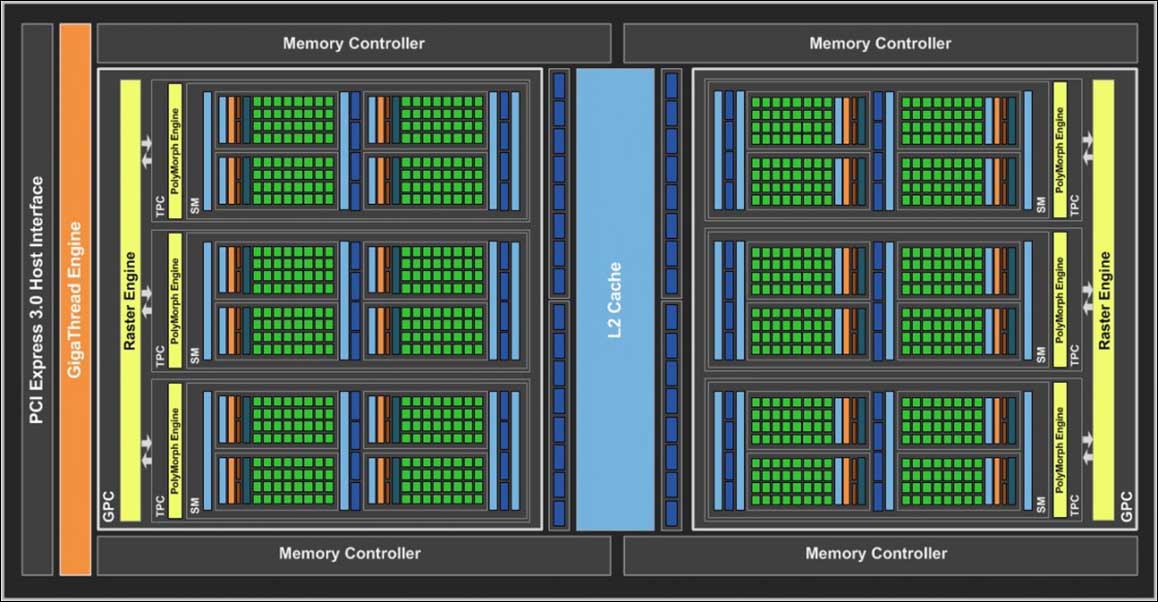
With that frame of reference in mind the GP107 used in the GTX 1050Ti class of cards is the fully enabled GP107 version and has been dubbed the GP107-400. This means it has six TPCs with amongst other things 768 Cuda cores. The GTX 1050 on the other hand makes use of a GP107-300 which has a full TPC disabled. Giving it only 640 CUDA cores. However as both have the same overall TDP of 75 watts, NVIDIA gives the lower CUDA count GTX 1050 class a higher base and boost clock. Specifically, a stock GTX 1050Ti’s base clock is 1290Mhz with boost of 1392MHz, whereas the GTX 1050 comes with a base clock of 1354Mhz and a boost of 1455Mhz. Though to ensure this higher clock settings does not translate into better performance than the GTX 1050Ti series, NVIDIA does cut the memory in half from 4GB to 2GB. That is a sub-optimal solution to say the least as the Ti should have higher clock speeds and not just more cores & memory.
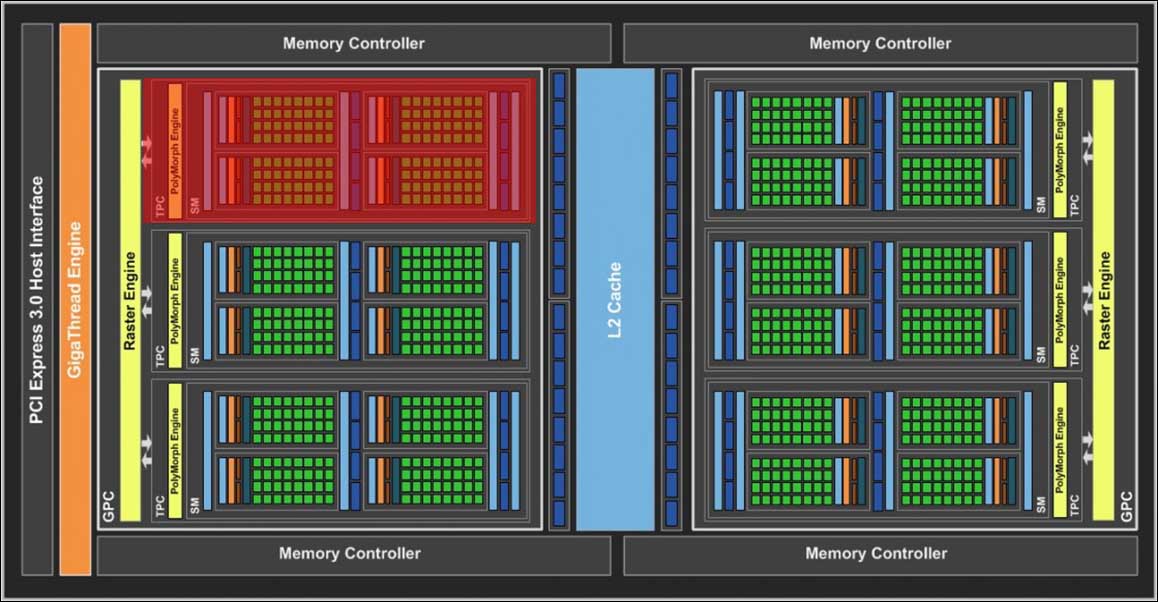
Thankfully MSI agrees with our assessment and has given the Gaming X 4G GTX 1050TI a nice little factory overclock. In fact, it is clocked higher than a reference GTX 1050 with a base clock of 1379Mhz and a boost setting of 1493Mhz. Now that is cooking with gas folks. Especially when you consider the fact that this bad boy has a TwinFrozr VI custom cooling solution that keeps this little GPU nice and cool – and allows you to reach and maintain the boost settings unlike some GTX 1050Ti cards.

The major downside is that since the GTX 1050Ti Gaming X 4GB is still based on a GP107 processor it still has the same narrow 128bit bus. This is because along with scaling down the GPC and TPC count the memory controller numbers also go down. Basically, as this is a rather small processor there is only room for four 32bit memory controllers. Compare and contrast this with the larger GP106 used in the GTX 1060 class which has room for six 32bit memory controllers or a 192bit wide bus… and you can see the downside to the modular design that NVIDIA uses – as the GPC and TPCs may scale down nicely but the memory bus quickly gets hamstringed. This does negatively impact overall performance. So much so it can be considered the greatest weakness of the GTX x50 and GTX x50Ti class of cards.
To help things on this side of the equation MSI has slightly boosted (by 1.4%) the GDDR5 memory speed from 1752Mhz (7008Mhz effective) to 1777MHZ (7108Mhz effective). This opens the bus up somewhat and turns are 112.1GB/s bus into a 113.7GB/s bus. It is not much but it does make a difference. Thankfully MSI does include a 6-pin power connector (which is not standard on reference GTX 1050Ti cards) so pushing the overclock up even further is a breeze.
Now on to the card. On just first glance you would be hard pressed to guess which version Gaming X this card really is. That is because the ‘little’ GTX 1050Ti processor gets the TwinFrozr treatment. This certainly is a good thing as these two large fans keep things nice and cool. So cool that the fans do indeed stop spinning during periods of low demand. Even when overclocked this custom heatsink and fan combination is a truly low noise solution.
This is because this TwinFrozr does not only include two potent fans but also uses a heatpipe for its heatsink. It may ‘only’ be a single 8mm heatpipe but compared to solid aluminum versions it really is well above average… and a large reason this GTX 1050Ti has so much potential.
Further proving its overclocking pedigree is the fact that MSI has included a 6-pin power connector so as to double the total available wattage from 75 watts to relatively massive 150 watts. Yes this is more power than you can ever hope to fully use thanks to NIVIDA locking down the maximum wattage you can push to the GP107-400 core… but it is the way all GTX 1050Ti cards should have been designed – TDP be damned.
The downsides to this rather attractive card are twofold. Firstly, it is rather large for it class. Not only is this a rather long – for its class – GTX 1050Ti it is also a rather tall card. As you can see this card may not fit into smaller PC cases. It should fit in most but if your case is small the extra height of this card may mean you cannot install a fan on the side panel… and in some cases you may not even be able to close the side panel when this card is installed. Yes it is rather big for such a little card.
Secondly this card is a touch expensive for its class. It is not expensive per say, but does cost more than the typical GTX 1050Ti card. Of course, this is to be expected as it is factory overclocked – on both the GPU and RAM sides of the equation and this extra binning of parts costs money. That TwinFrozr cooler also costs more to produce. So while the MSI GTX 1050Ti Gaming X 4GB is not into GTX 1060 territory you are going to be paying a premium for its abilities – so make sure you actually need more than what a standard GTX 1050Ti brings to the table or this is money that will be less than optimally spent.
On the positive side, MSI has not just overbuilt the heatsink and cooling solution and rather they have also overbuilt on the power delivery side of the equation. As with all good MSI cards the power subsystem consists of ‘Military Class’ components and you can expect to find a 4-phase based, all digital VRM. That is indeed overkill for a 75 watt class GPU. Of course, this extra headroom does come in handy when your overclocking as you can fully expect to push this card without fear of the power subsystem failing you.
The only other point of issue is with the connectivity options. This is more of a nitpick but when you have a double slot design but only include three ports expect people to be a little disappointed. On the positive side MSI has not included any ‘mini’ ports and instead you will find a single full-sized HDMI port, DisplayPort, and DVI ports. This certainly covers all the bases but a second DP and HDMI port would certainly have been nice for those who use more than one or even two monitors at a time.

